
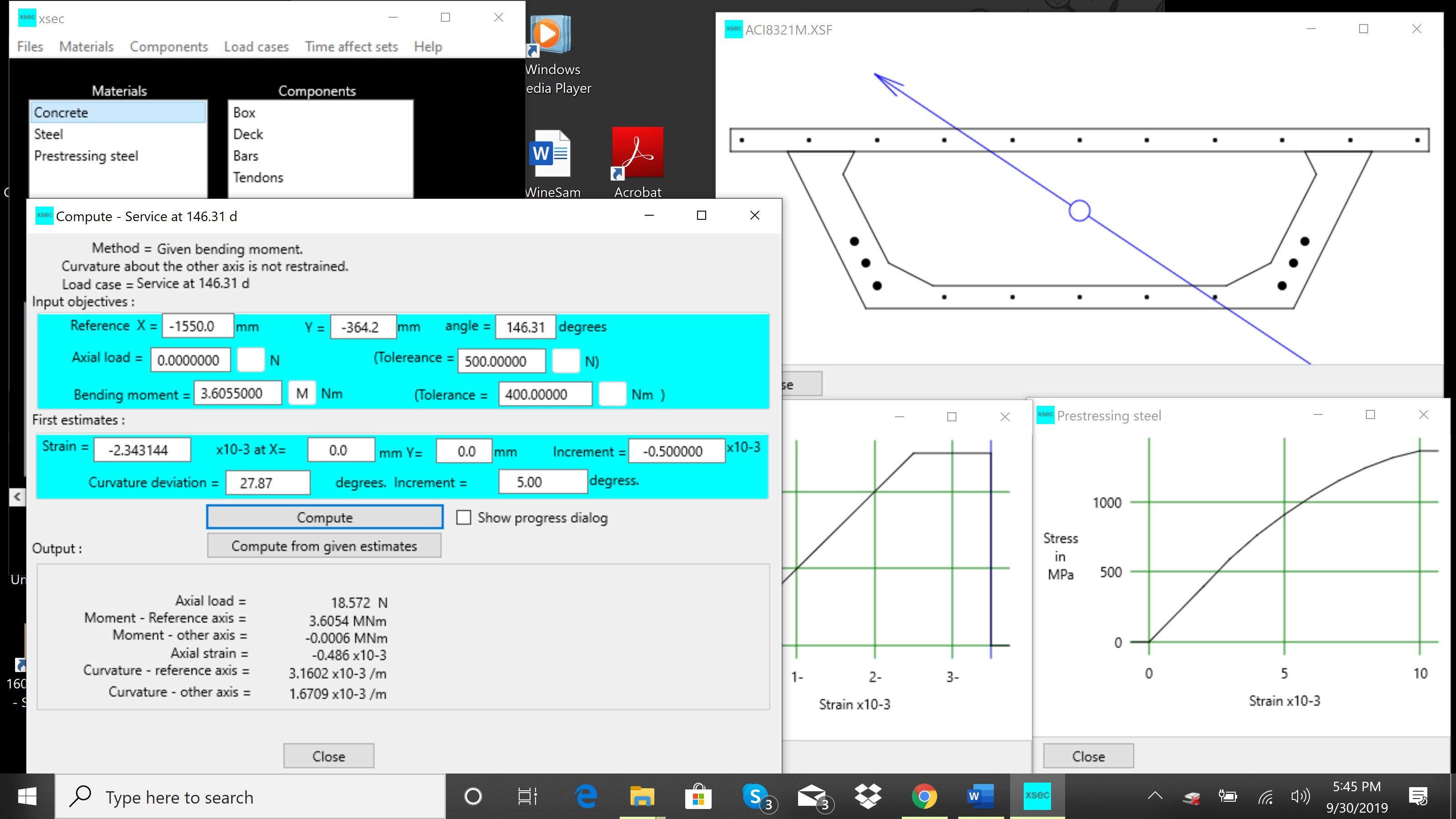
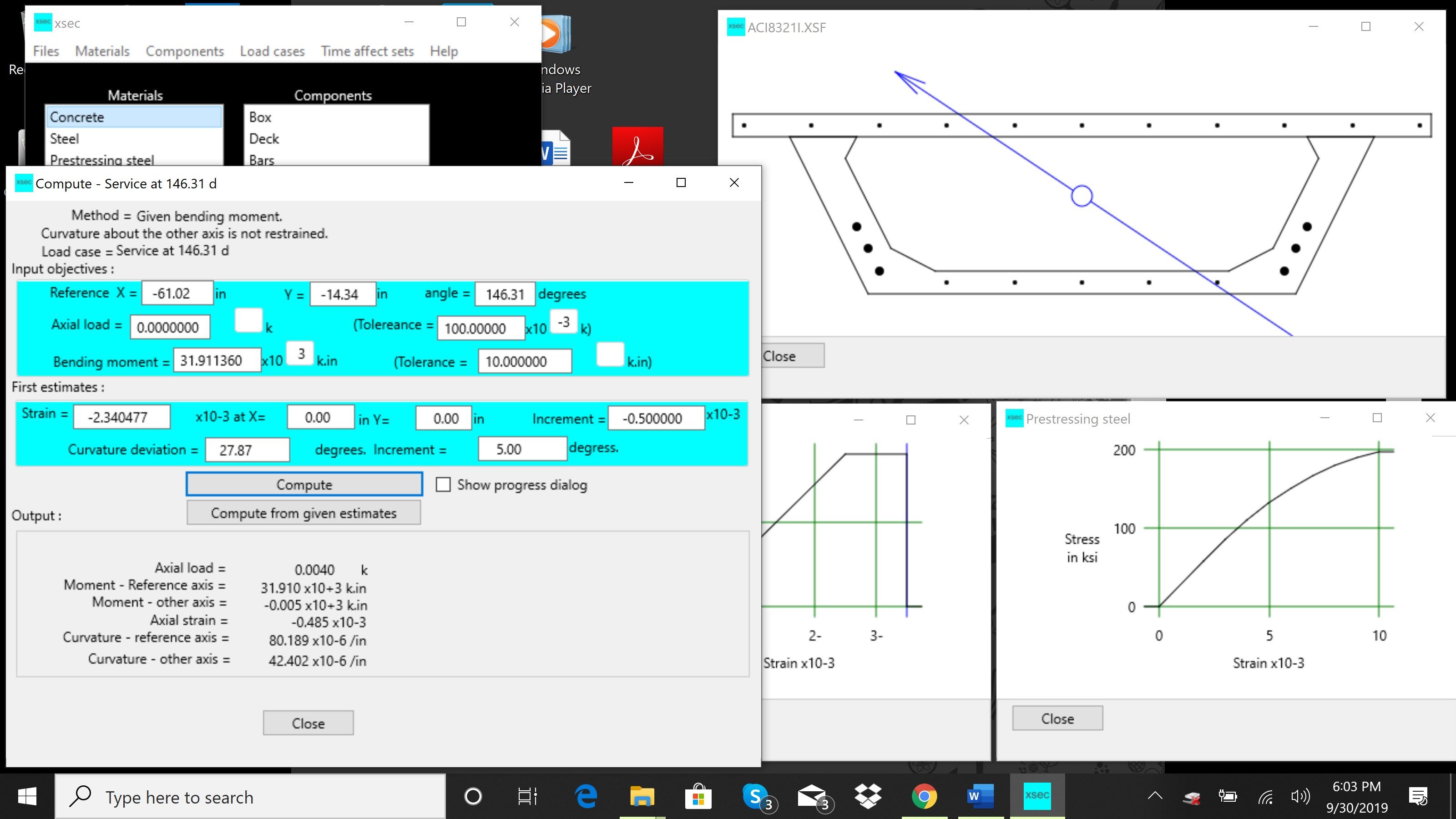
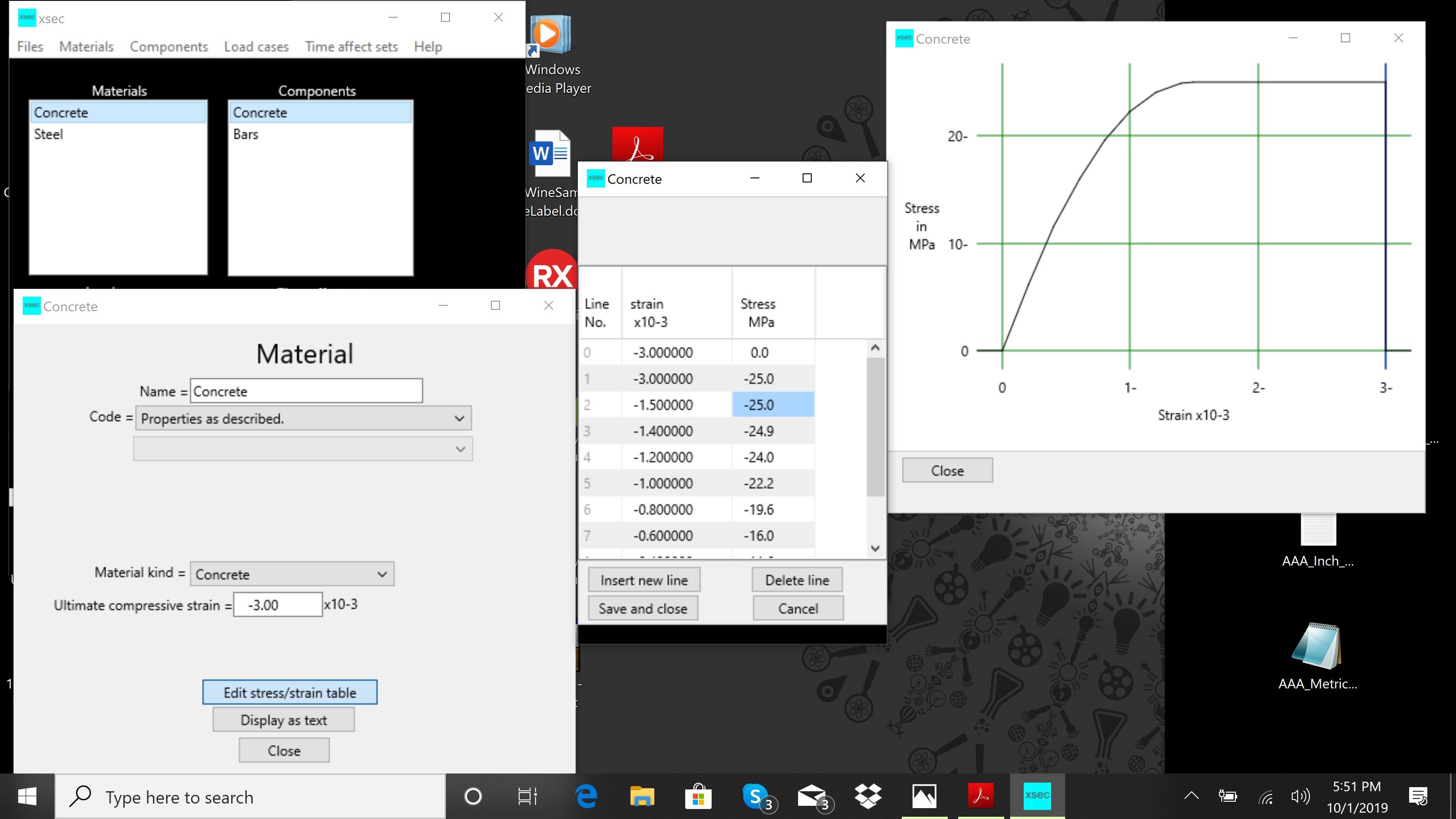
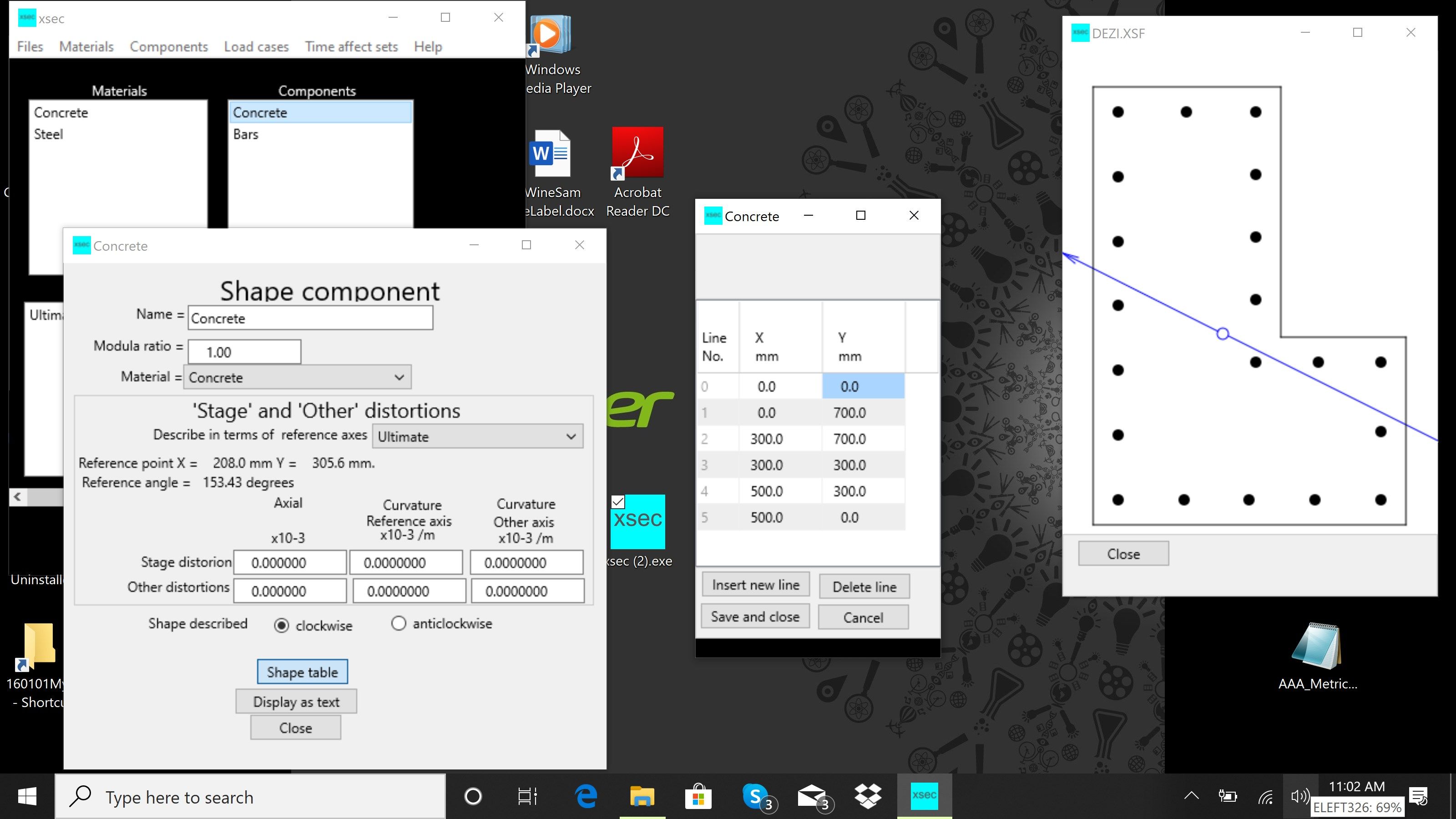
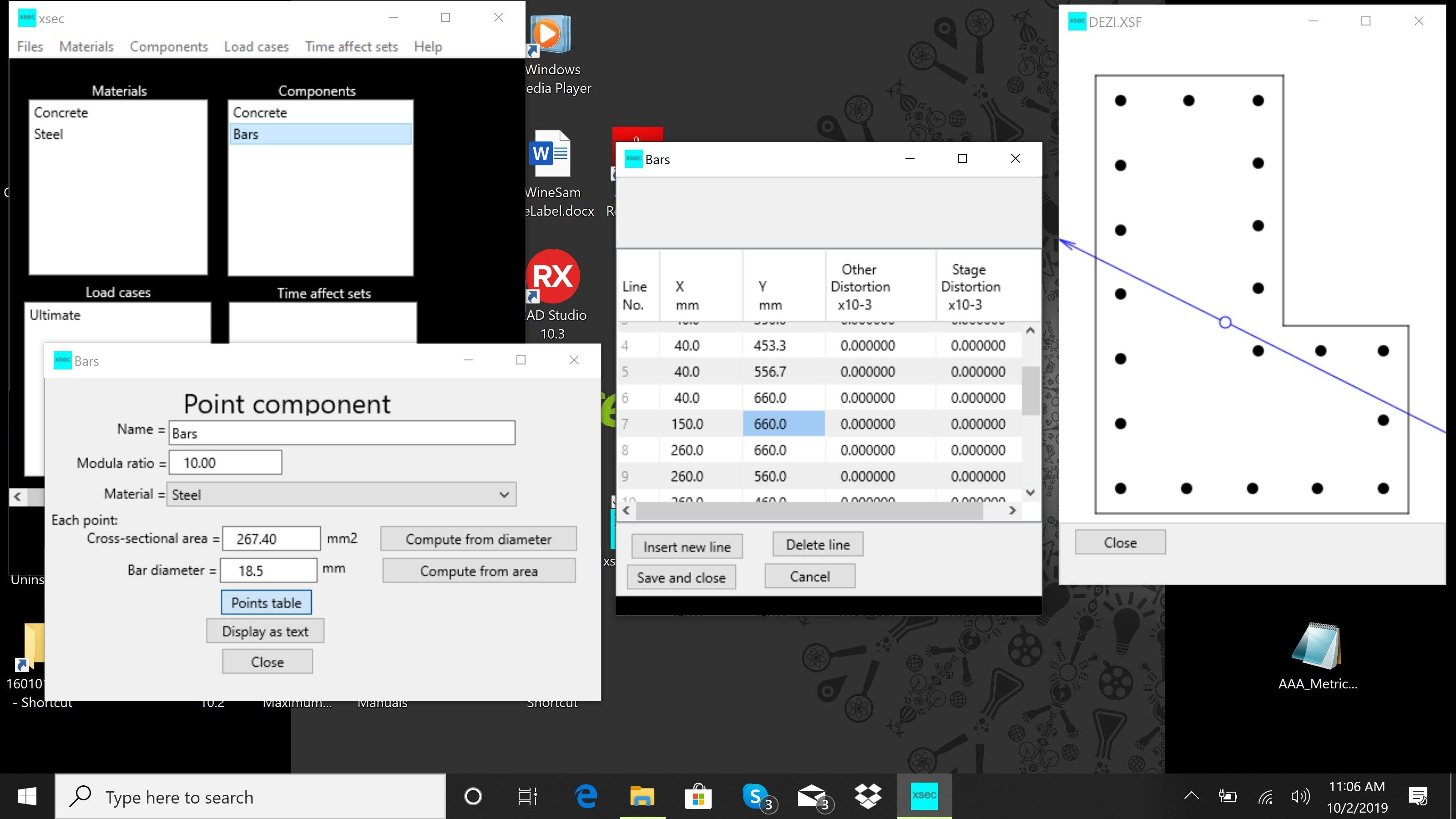
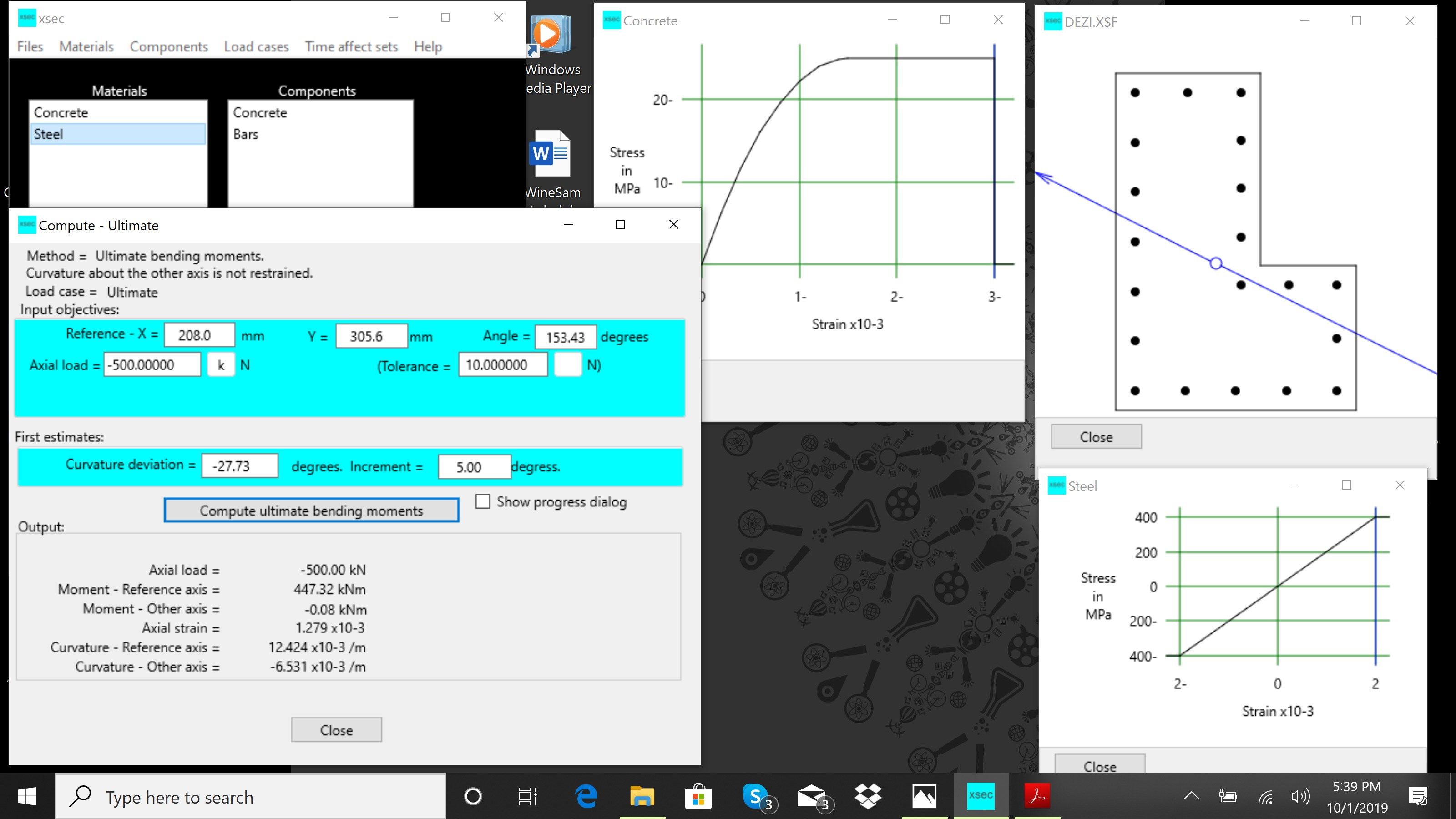
Description
Beam and column cross-section analysis of reinforced concrete. Metric or inch-pound units. Any shape: input X,Y per corner or bar. Any materials: input a sequence of stress-strain coordinates for each. Any loading; biaxial or not.
An innovative beam or column cross-section analysis algorithm that is very universal is used. The enterprising design professional can take full advantage of their knowledge of the materials:
• to design innovative concrete members,
• to assess the remaining strength in irregular shaped surviving parts of deteriorated or damaged beams or columns.
The algorithm is described by Thompson, P. J., Discussion of “Ultimate Strength Domain of Reinforced Concrete Sections under Biaxial Bending and Axial Load”, ACI Structural Journal, Nov-Dec 2013, pp 1109-1112.
There are established computation methods for a variety of cross-section shapes: rectangular, circular and Tee are examples. Also the established methods use a variety of shapes for the stress/strain relationship of concrete: the rectangular stress block, the parabolic stress block, linear, cracked linear are examples.
With most of these established methods, if the input to the application is the same as that input to the established method then the results from the application will be the same as those from the established method. Several of the worked examples are taken from previously published articles and illustrate this point. These examples cannot however demonstrate the universal nature of this application.
There is a file system so that material descriptions prepared for a particular locale or standard design code document once prepared can be copied into each new job.
The material description facility is completely general. Nevertheless there are also facilities that will automatically generate material descriptions that are in accordance with various mainstream design codes such as ACI-318 and Eurocode 2. These require input values for specific parameters defined in the relevant code.
There is a comprehensive user guide and some worked examples on the internet at xsecweb.com.
-
Service load analysis gives curvatures used to assess deflection. This is biaxial: the loading axis can have any orientation.
-
Yield analysis gives the bending moment that would cause a steel bar to yield. This can be biaxial: the user can stipulate any orientation for the bending moment axis.
-
Ultimate strength analysis gives the ultimate strength bending moment. This can be biaxial: the user can stipulate any orientation for the bending moment axis.
-
Any concrete shape; input as a sequence of X, Y coordinates for the corners.
-
Can accommodate several concrete components each of a different grade of concrete.
-
Facilities for concrete shrinkage and creep.
-
Any reinforcing arrangement; input X, Y coordinates for each bar.
-
Can accommodate several different reinforcing bar sizes each of a different grade of steel.
-
Facilities for prestressing, staged construction and composite action.
